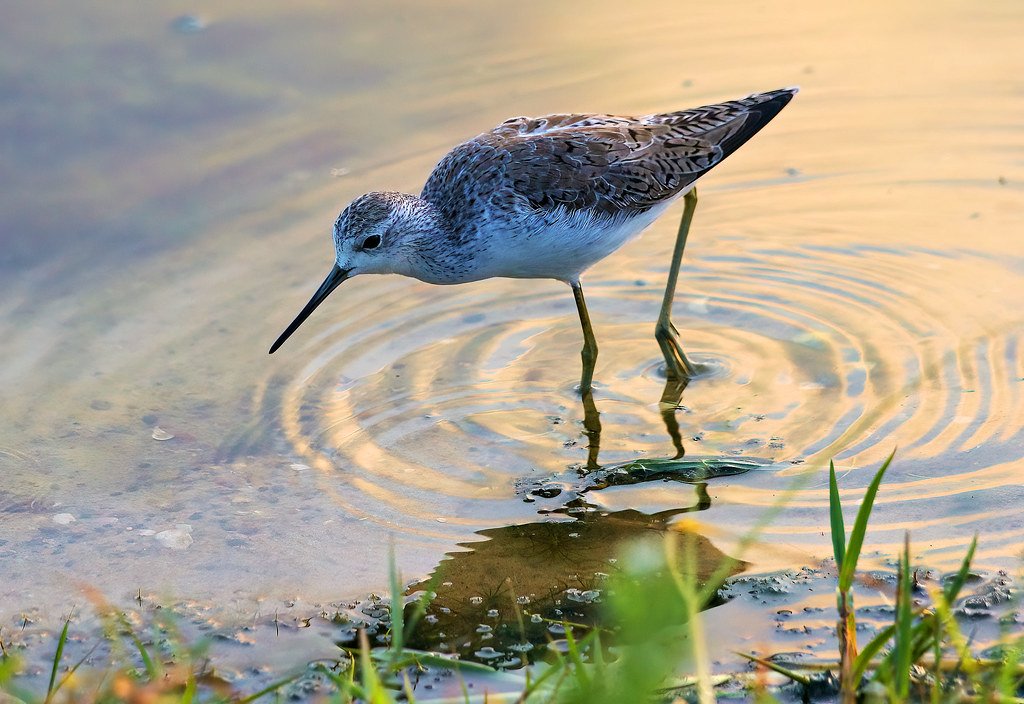The sun hasn’t even crested the horizon, yet somewhere in a forest clearing, a robin is already tugging at an earthworm with determined precision. Across the globe, millions of creatures are stirring from their slumber, each following ancient rhythms that have been perfected over millions of years. While humans fumble for their coffee makers and hit snooze buttons, the animal kingdom operates on a biological clock so precise it would make Swiss watchmakers envious. These morning rituals aren’t just charming habits – they’re survival strategies forged by evolution, competitive advantages that separate the thriving from the barely surviving.
The Science Behind Animal Morning Routines

Every creature on Earth operates on what scientists call circadian rhythms – internal biological clocks that regulate sleep-wake cycles over roughly 24-hour periods. These rhythms are controlled by a tiny cluster of cells in the brain that respond to light and darkness, essentially acting as nature’s alarm clock. For animals, these rhythms determine not just when to wake up, but when to hunt, when to mate, and when to seek shelter.
What makes animal morning routines so fascinating is their incredible precision. Studies have shown that many species can predict sunrise to within minutes, even on cloudy days. This internal timekeeper evolved because morning hours offer unique advantages: cooler temperatures, higher humidity, less competition from other species, and often, the most abundant food sources.
Why the Early Bird Really Does Get the Worm

The famous saying isn’t just folksy wisdom – it’s backed by solid biology. Earthworms are most active during the night and early morning hours when the soil is moist and temperatures are cool. As dawn approaches, these protein-rich creatures begin retreating deeper into the soil to avoid the drying effects of sunlight.
Birds that wake up earliest have access to the most worms, which are still near the surface and easier to catch. Research has shown that robins, thrushes, and other ground-feeding birds can capture up to 70% of their daily protein requirements in the first two hours after sunrise. Those that sleep in often find themselves competing for scraps or switching to less nutritious alternatives like berries or insects.
Dawn Patrol: Predators Who Rule the Early Hours

Big cats like lions and leopards aren’t typically thought of as early risers, but many actually prefer the pre-dawn hours for hunting. The cool temperatures mean less energy expenditure, and their prey is often at its most vulnerable – either still drowsy or focused on drinking water at dawn watering holes.
Wolves follow similar patterns, with pack hunts often beginning before sunrise when their prey species are less alert. The dim light of dawn also provides perfect cover for these apex predators, allowing them to get closer to their targets without being detected. Studies of wolf packs in Yellowstone have shown that hunts initiated before sunrise have success rates nearly 40% higher than those started during full daylight.
Aquatic Morning Risers: When Fish Get Active

Beneath the water’s surface, an entirely different morning ritual unfolds. Many fish species experience increased feeding activity during the first few hours after sunrise, a phenomenon that every angler knows well. This happens because zooplankton and other microscopic prey rise toward the surface during dawn hours, following their own circadian patterns.
Bass, trout, and salmon capitalize on this early morning feeding frenzy, often consuming more food in the first two hours of daylight than they do for the rest of the day combined. The calm water conditions typical of early morning also make hunting more efficient, as ripples and waves from wind don’t interfere with their ability to detect movement.
Insect Dawn Chorus: The Smallest Morning Warriors

While birds get credit for the dawn chorus, insects actually orchestrate one of nature’s most complex morning symphonies. Crickets, cicadas, and grasshoppers all have specific timing for their morning calls, with different species taking turns like musicians in an orchestra.
This timing isn’t random – each species has evolved to call when conditions are optimal for their sound to travel furthest and attract mates most effectively. The cool, still air of early morning carries sound waves more efficiently than the turbulent air of midday, making dawn the perfect time for long-distance communication. Some beetle species synchronize their emergence with sunrise so precisely that researchers can predict their appearance within a 15-minute window.
Primate Wake-Up Calls: Social Mornings in the Trees

Many primate species begin their day with elaborate social rituals that strengthen group bonds and establish territories. Howler monkeys in Central and South America produce calls that can be heard up to three miles away, primarily during the first hour after sunrise.
These morning vocalizations serve multiple purposes: they announce the group’s location to other troops (essentially saying “this territory is taken”), they help group members locate each other after a night spent sleeping in different trees, and they reinforce social hierarchies within the troop. Chimpanzees follow similar patterns, with dominant males often leading morning vocal displays that can last for over an hour.
Marine Mammals: Surfacing with the Sun

Dolphins and whales often increase their surface activity during dawn hours, though their reasons are more complex than simple feeding. Many species use the early morning calm water to engage in social behaviors like play, grooming, and teaching young calves essential survival skills.
Humpback whales time their feeding to coincide with the vertical migration of krill, which rise toward the surface during dawn and dusk. A single adult humpback can consume up to 3,000 pounds of krill and small fish during these peak feeding times. The quiet conditions of early morning also make it easier for these giants to communicate through their complex songs, which can travel hundreds of miles underwater.
Reptilian Sun Worshippers: Cold-Blooded Morning Routines

Reptiles face a unique challenge each morning – they need to literally warm up their bodies before they can function effectively. Lizards, snakes, and turtles are among the first creatures to emerge at sunrise, not to hunt, but to bask in the early rays of sunlight.
These cold-blooded creatures position themselves strategically to catch the first warming rays, often emerging from their hiding spots while the air is still cool. Once their body temperature reaches optimal levels, they become incredibly active hunters and can capitalize on prey that’s still sluggish from the cool night. Desert species like rattlesnakes are particularly efficient at this, reaching hunting temperature within minutes of sunrise.
Nocturnal Creatures: The Great Morning Retreat

While many animals are starting their day at dawn, an equally impressive migration is happening in reverse. Nocturnal creatures like bats, owls, and raccoons are following their own morning ritual – the urgent retreat to safe daytime hiding spots.
Bats perform this transition with remarkable precision, returning to their roosts within minutes of sunrise. Their ability to navigate in the growing light while avoiding predators requires split-second timing. Many bat species have specific flight patterns they follow each morning, taking routes that offer maximum cover from birds of prey that are also beginning their hunting day.
Arctic Adaptations: Morning Rituals in Extreme Conditions

Animals living in Arctic conditions have developed some of the most remarkable morning adaptations on the planet. Arctic foxes and wolves must time their activities around extreme variations in daylight – from months of continuous darkness to months of continuous light.
During the brief Arctic summer, these animals compress their daily activities into incredibly efficient routines. Polar bears, for instance, may hunt continuously during the white nights of summer, but they still follow circadian patterns based on their internal clocks rather than external light cues. Their morning “routine” might begin at what would be 3 AM in temperate climates, but it’s perfectly synchronized with their prey’s behavior patterns.
Migratory Morning Patterns: Timing the Journey

Migrating animals face the ultimate morning challenge – not just starting their day, but potentially starting a journey of thousands of miles. Birds like geese and swans often begin their migration legs at dawn, taking advantage of cooler temperatures and calmer air conditions.
These species have evolved to read incredibly subtle environmental cues that signal optimal departure times. Barometric pressure, wind direction, and even magnetic field variations all play roles in their morning decision-making. Research has shown that successful migrating flocks have leaders who can interpret these morning conditions with extraordinary accuracy, often making decisions that affect the survival of hundreds of individuals.
Urban Wildlife: Adapting Morning Routines to City Life

City-dwelling animals have had to dramatically modify their traditional morning routines to survive in urban environments. Pigeons, crows, and raccoons have learned to time their activities around human schedules, often beginning their day even earlier to avoid peak traffic and human activity.
Urban coyotes have developed particularly interesting adaptations, shifting their naturally crepuscular (dawn and dusk) activity patterns to avoid human contact entirely. Many urban coyote packs now begin their day at 4 AM, completing most of their hunting and territorial activities before the first joggers hit the streets. This behavioral flexibility has allowed them to thrive in environments their wild counterparts could never inhabit.
Deep Sea Morning Mysteries: Vertical Migration Patterns

In the depths of the ocean, where sunlight never penetrates, countless species still follow morning routines based on circadian rhythms. The deep sea experiences one of the largest migrations on Earth every single morning – the descent of billions of creatures back to the depths after spending the night near the surface.
Lanternfish, jellyfish, and countless species of zooplankton rise toward the surface each night to feed in nutrient-rich shallow waters, then descend again at dawn to avoid predators. This vertical migration can span over 1,000 feet and involves more biomass than all human activity combined. Scientists are still discovering how these creatures maintain such precise timing without any light cues from the surface.
Seasonal Morning Variations: How Routines Change

Animal morning routines aren’t static – they shift dramatically with the seasons. Squirrels preparing for winter begin their days progressively earlier as autumn approaches, maximizing their time for gathering and storing food. Bears emerging from hibernation have disrupted circadian rhythms that take weeks to normalize.
Deer change their morning patterns based on hunting seasons, mating seasons, and food availability. During spring, when new plant growth provides abundant food, deer may begin feeding before sunrise and continue well into the morning. During harsh winters, they conserve energy by delaying their morning activity until temperatures rise slightly.
The Role of Weather in Morning Animal Behavior

Weather patterns dramatically influence animal morning routines, sometimes overriding millions of years of evolutionary programming. Before major storms, many species drastically alter their morning behavior – birds may begin their daily activities hours earlier, while others may not emerge at all.
Barometric pressure changes can trigger emergency feeding behaviors, with animals sensing approaching weather systems and adjusting their schedules accordingly. Honeybees are particularly sensitive to these changes and may begin their morning foraging activities up to three hours earlier when low pressure systems approach. This weather sensitivity often allows animals to survive conditions that would otherwise be fatal.
Morning Territorial Behaviors: Claiming Space at Dawn

Dawn marks the beginning of daily territorial disputes across the animal kingdom. Many species use the early morning hours to reinforce boundaries, chase away intruders, and establish dominance hierarchies that will determine resource access for the entire day.
Red-winged blackbirds are master practitioners of dawn territorial behavior, with males arriving at their territories before sunrise to sing and display before females and competing males become active. Studies show that males who establish territory earliest in the morning have significantly higher mating success and better access to prime nesting sites. The early morning investment in territorial behavior pays dividends throughout the breeding season.
Parent-Offspring Morning Dynamics: Teaching Survival from Dawn

Young animals learn their morning routines by closely observing their parents, creating some of the most touching scenes in nature. Wolf pups learn pack hunting strategies by participating in dawn hunts, while young birds master the art of early morning foraging through patient instruction from their parents.
Mother elephants spend considerable time each morning teaching their calves essential survival skills – which plants are safe to eat, how to access water sources, and how to read environmental danger signs. These morning “lessons” are crucial for survival, as young animals who master these routines early have dramatically higher survival rates than those who don’t.
The Future of Animal Morning Routines

Climate change and human expansion are forcing many species to adapt their morning routines in unprecedented ways. Rising temperatures are pushing dawn activity even earlier for many desert species, while light pollution in urban areas is disrupting the circadian rhythms of countless others.
Some species are proving remarkably adaptable – city birds are learning to sing at different frequencies to cut through traffic noise, while others are shifting their entire activity patterns to avoid human interference. However, species with rigid morning routines tied to specific environmental conditions face uncertain futures as their habitats continue to change. The animals that can adapt their ancient morning rituals may be the ones that thrive in our rapidly changing world.
Conclusion: The Timeless Dance of Dawn

The morning rituals of the animal kingdom represent millions of years of evolutionary fine-tuning, where split-second timing can mean the difference between feast and famine, life and death. From the robin pulling worms in your backyard to the polar bear hunting seals on Arctic ice, each species has developed morning routines that maximize their chances of survival in environments ranging from tropical rainforests to the deepest ocean trenches.
These behaviors remind us that we’re part of a much larger, interconnected web of life, where every creature from the tiniest insect to the largest whale follows rhythms as old as life itself. As our world continues to change, understanding and protecting these ancient morning rituals becomes not just scientifically fascinating, but essential for maintaining the delicate balance that allows all species to thrive.
Next time you hear that first bird singing before sunrise, take a moment to appreciate that you’re witnessing the continuation of a ritual that began millions of years ago. What other morning mysteries might be unfolding in the natural world while you’re still reaching for your alarm clock?



